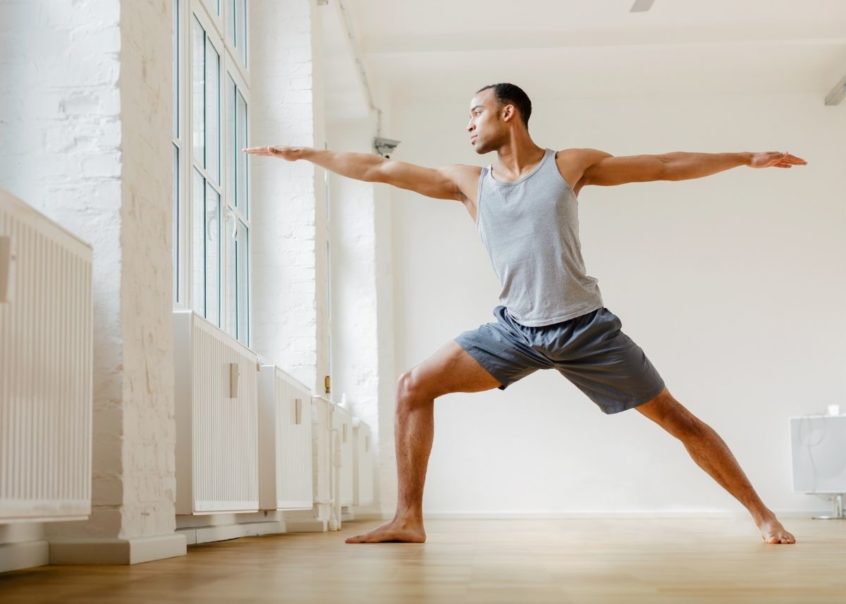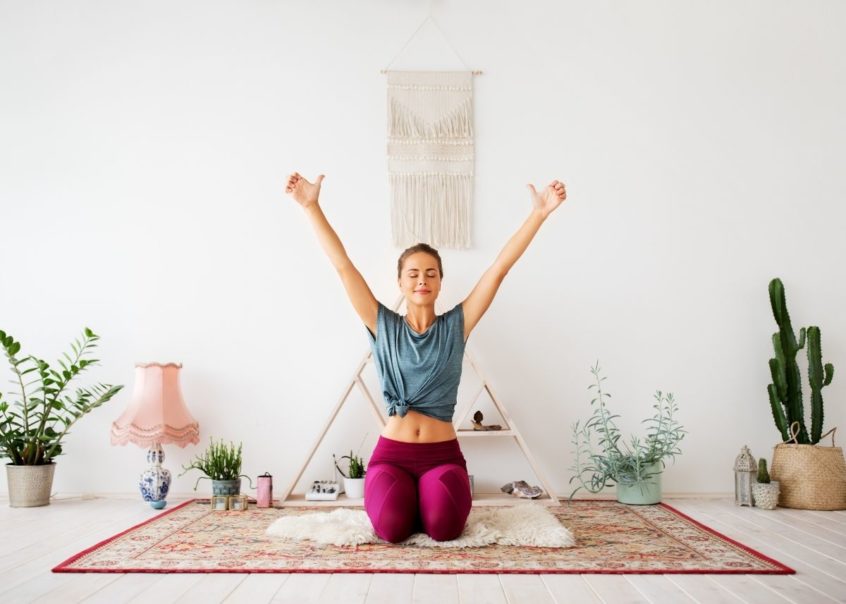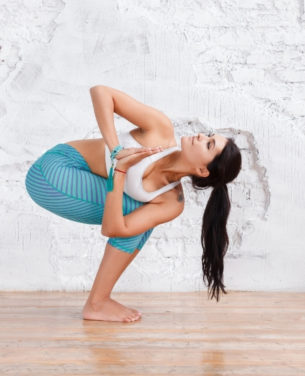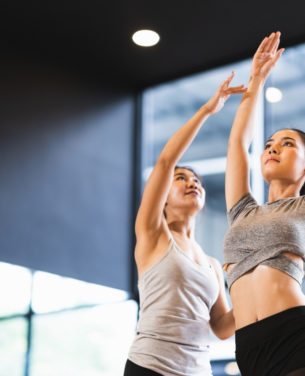Equilibrium
by Circuit

6 Different Types of Yoga Classes for Beginners to Try
15.10.2021
There are countless variations of Yoga that exist, and while almost all encompass similar benefits including strengthening and flexibility, stress management, vitality, and so much more, each form offers a unique experience. Some yoga forms embrace more movement and physical exertion, while other forms combine more meditation and restful qualities. Depending on the time of day you like to workout, or how you are interested in combining Yoga to your routine as it compliments your current fitness plan, trying out a variety of forms can help you find the ideal variation that is suitable for your individual needs. In this post, we explore 6 different types of Yoga classes we offer as part of several of our virtual and in-person offerings across Circuit communities.
1. Hatha Yoga
Hatha yoga is typically the most common and introductory yoga style most people will experience when attending a Yoga class for the first time. This class follows a Iyenger-style format which is a structure focusing heavily on form, detail, precision, and alignment from a series of Yoga postures, also known as Asanas. In Hatha yoga, the instructor will teach basic postures to help strengthen and promote flexibility in the body, and the class generally moves at a slower pace with controlled movements and stretches that align with the breath. You can expect an emphasis on simplicity, repetition, and ease of movement. This class is a great foundational class that will help develop any beginner’s yoga practice.

2. Vinyasa Yoga
Vinyasa yoga, also known as Ashtanga yoga, tends to move at a more heart-pumping pace, and contrary to more commonly frequented Hatha yoga, the breath is used in synergy with movement as opposed to combined in stillness with a posture. Movements are strung together in a format so movement feels like a rhythm or ‘flow’ and for many, this form of yoga is perceived as a fun and dynamic twist on the traditional routine. Movements help to build strength and fluidity through warming flows, and sequences allow focus to be shifted to the ‘self’. No two classes are ever alike, so you can expect a different experience every time you attend a vinyasa or ashtanga-style yoga class.

3. Yoga Core
As the name implies, a Yoga Core class centers around conditioning and balance with a focus on the core muscles. This foundational yoga has elements of strengthening, grounding, development, and awareness building around your ‘center’. Standing poses to build strength are often included as well as balance asanas. You can anticipate a deeper level of core work than other yoga forms, combined with breath work and control. The key benefit of this yoga variation is a deepening and activation of your entire core region while building awareness to your sense of movement and being with the mindfulness and breathwork of traditional yoga.

4. Kundalini Yoga
Kundalini Yoga is an ancient system of yogic exercises and meditation that promotes health, happiness, and spiritual awareness. Key components include incorporation of mantras, breathwork, meditations and mudras designed to awaken, activate, and bring awareness to the vital energy flow of the spine and major energy meridians of the body, also known as chakras. This class variation typically includes warm ups, breathing techniques, an exercise set, deep relaxation, and meditation. Walk away with the accomplishment of building physical vitality, calming the nerves, balancing your physiological state, and expanding your consciousness. Out of this list of Yoga variations, Kundalini yoga may be on the more challenging-end for some given the focus required, however it’s still a welcoming format that any beginner can jump in and enjoy.

5. Restorative Yoga
Restorative yoga is the most restful yoga you will experience, with a primary goal of winding down the muscles and releasing tension in the body. Find deep relaxation as you hold more passive stretches and poses for longer periods of time combined with the breath to help settle the nervous system. By relaxing in particular poses without strain or pain for extended time periods, you can achieve physical, mental, and emotional relaxation that is perfect after a long, stressful day, or to prime you for a restful night’s sleep.

6. Candlelight Yoga
As implied, this Yoga promotes a peaceful and relaxing candle lit ambiance as your instructor guides you through traditional Yoga movements. This type of class focuses on poses that promote relaxation, restoration, and rejuvenation, similarly to restorative and Hatha yoga. A variety of props are sometimes used during this class, however you can easily improvise with alternative props or just come with yourself. Similarly to restorative yoga, Candlelight yoga is a great way to conclude your evening and help bring closure to your day or week.



